
Field chickweed, Cerastium arvense (Torr.) W. A. Weber & R. L. Hartm. (right) is a common, widely distributed wildflower often seen growing in open fields (the species name, arvense, implies a cultivated field or meadow). Related cerastium cultivars, with similar flowers, are often used as border plants in ornamental gardens.
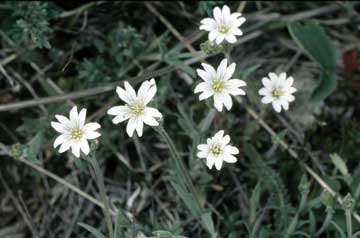
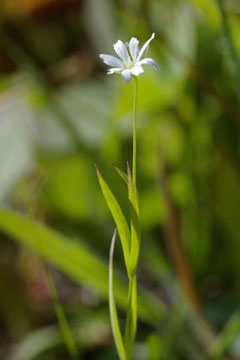
Uinta sandwort, Eremogone kingii (S. Watson) Ikonn. var. glabrescens (S. Watson) Dorn (right). The Uinta sandwort (formerly Arenaria kingii) is a common, low, spreading plant that grows at all elevations on rocky sagebrush covered slopes and gravelly ridges, blooming from late spring well into the summer. Brown anthers borne on thin filaments overlie each petal and give the five-petaled flowers a spotted appearance. Until recently, this and similar plants were included in genus Arenaria (from the Latin word arena meaning “sand” reflecting the plants’ preferred habitat). This plant’s species name honors geologist Clarence King (1842-1901) who surveyed the Rocky Mountains and Great Basin, in the 1860s. Eremogone, from two Greek words, means “solitary seed.”
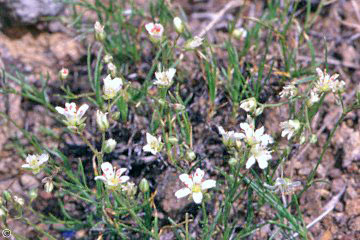

Bladder campion or common catchfly, Silene vulgaris (Moench) Garke (right) is most often seen growing on disturbed ground. It is easily identified by its deeply cleft white petals and the large, green-striped, inverted tear-shaped involucrum that is responsible for its common name, bladder campion--a name shared with several similar plants.. The common catchfly (formerly Silene curcubalus Wibel) is a a Eurasian import that is now found in most of the United States (except for a few southern states) and in most of Canada. The common name catchfly refers to the sticky involucrums common to this and a few related genera.
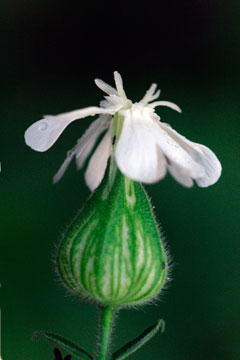

Parry’s Silene Silene parryi (left), blooms from early summer on. A rangy, long stemmed, plant, with a cluster of basal lanceolate leaves, it may be further identified by its notched petals protruding from bottle-shaped tubes formed by five joined, pointed, sepals. As the flowers age, the ten longitudinal green stripes.turn purple and its petals point outward. Charles Christopher Parry (1823-1890), for whom this species is named, was an English-born American botanist.
Scouler’s silene, Silene scouleri Hook. Scouler’s silene (right) has at least three, and usually more, pairs of broadly lanceolate opposing leaves that become smaller and farther apart as they ascend the stem. Higher up there are two or more clusters of long-tubed flowers with hairy, sticky, fusiform calyces. Scouler’s silene is found mostly at lower altitudes. Th species name honors John Scouler (1804-1871), a ship’s surgeon who came to America in 1825 with David Douglas. Douglas remained, and Scouler returned with his ship to England, having found several new plants during his brief stay in the Northwest.
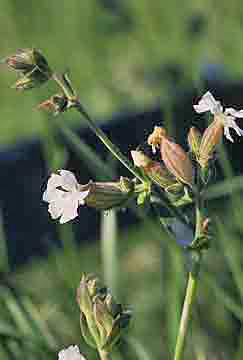

.